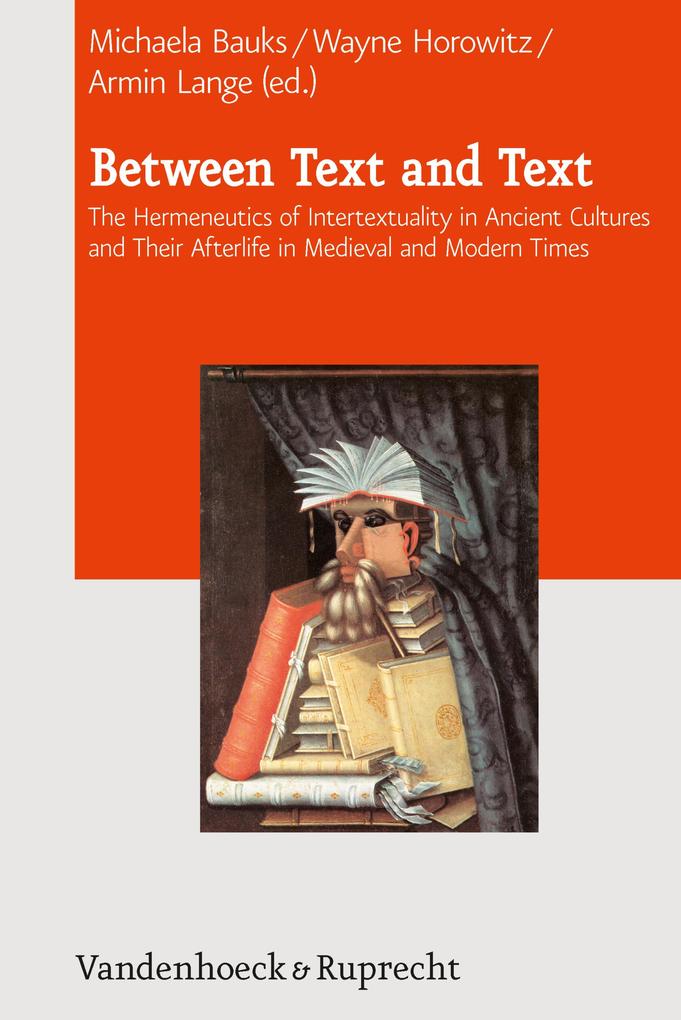Bücher versandkostenfrei*100 Tage RückgaberechtAbholung in der Wunschfiliale

Sofort lieferbar (Download)
The intertextuality research of antique texts and their reception in Medieval and modern times is the subject of this volume: (1) What is a text and what is an intertext? This concerns the various different forms of text and how they present themselves in architecture, iconography, lexicography, the study of lists, etc. (2) Forms of intertextuality - on the relationship between writtenness and oralness, how oral texts are objectified during textualisation and become fixed acts of speech (K. Ehlich), how especially antique texts were shaped by the continual interconnectedness of oral and written traditions. (3) What is understood in ancient Oriental and antique literature by "tradition" and "transmission"? To this end, the research includes languages, historical reality and antique thought structures, making clear that the transferral of tradition occurs not only within a close cultural circle, but in the exchange with neighbouring cultures over large distances and geographic boundaries. (4) On the relationship between intertextuality and canon. A number of contributions study this aspect of ongoing historical debate as it often found for culturally definitive and canonised texts - a necessary part of the their rejuvination process. Contributions by M. Bauks, A. Lange / Z. Plese, Ph. Alexandre, S. Aufrère, M. Oeming, K. Davidowicz, A. Wagner, G. Selz, M. F. Meyer, L. Roig Lanzillotta, M. Dimitrova, F. Waldman, W. Horowitz, M. Risch, J. van Ruiten, L. Bormann, A. Miltenova, J. Taschner, G. Brooke, G. Dorival, A. Harder and S. Alkier.
Inhaltsverzeichnis
1;Cover ;1 2;Title Page ;4 3;Copyright ;5 4;Table of Contents ;6 5;Body ;10 6;Preface;10 7;Introduction;12 8;Part 1: Methodology ;26 8.1;Michaela Bauks: Intertextuality in Ancient Literature in Light of Textlinguistics and Cultural Studies;28 8.2;Gebhard J. Selz: Texts, Textual Bilingualism, and the Evolution of Mesopotamian Hermeneutics;48 8.3;Philip Alexander: A Typology of Intertextual Relations Based on the Manchester-Durham Typology of Anonymous and Pseudepigraphic Jewish Literature of Antiquity;67 9;Part 2: The Intertextualities of Written and Visual Texts;86 9.1;Retelling, Rewriting, Continuation ;88 9.1.1;Markus Risch: Tradition and Transmission of Texts and Intertexts in the Hebrew Bible and in Ancient Jewish Literature (Gen 6:14);90 9.1.2;Jacques T.A.G.M. van Ruiten: Abrahams Death: The Intertextual Relationship between Gen 25:710 and Jub. 22:123:8 ;98 9.1.3;Lautaro Roig Lanzillotta: Gospel of Thomas Logion 7 Unravelled: An Intertextual Approach to a locus vexatus;117 9.1.4;Sydney H. Aufrère: An Attempt to Classify Different Stages of Intertextuality in the Myth of Horus at Edfu;134 9.1.5;Klaus Davidowicz: Kabbalistic Elements in Popular Movies;155 9.1.6;Manfred Oeming: In kino veritas: On the Reception of the Biblical Book of Job in the Context of Recent Cinematography;165 9.2;Commentaries and Translations ;180 9.2.1;George J. Brooke: Controlling Intertexts and Hierarchies of Echo in Two Thematic Eschatological Commentaries from Qumran;182 9.2.2;Gilles Dorival: Biblical Intratextuality: MT-Numbers and LXX-Numbers: A Case Study;197 9.2.3;Margaret Dimitrova: New Testament Quotations in a Medieval Slavonic Manuscript with Commentaries on the Song of Songs;204 9.3;Quotations and Allusions ;218 9.3.1;Martin F. Meyer: Quotations in the Writings of Aristotle;220 9.3.2;Annette Harder: Intertextuality as Discourse: The Discussion on Poetry and Poetics among Hellenistic Greek Poets in the Third Century B.C.E. ;233 9.3.3;Lukas Bormann: The Colossian Hymn, Wisdom, an
d Creation;244 9.3.4;Genre and Motif ;258 9.3.5;Andreas Wagner: Typological, Explicit, and Referential Intertextuality in Texts and Images of the Old Testament and Ancient Israel;260 10;Part 3: Cultural Memory and Canon ;272 10.1;Wayne Horowitz: The Astrolabes: An Exercise in Transmission, Canonicity, and Para-Canonicity;274 10.2;Stefan Alkier: Reading the Canon Intertextually: The Decentralization of Meaning;289 10.3;Felicia Waldman: Turning the Interpretation of the Text into Text: Written Torah and Oral Torah in Jewish Mysticism;304 10.4;Anisava L. Miltenova: Intertextuality in the Orthodox Slavic Tradition: The Case of Mixed-Content Miscellanies;315 10.5;Armin Lange and Zlatko Plee: Text between Religious Cultures: Intertextuality in Graeco-Roman Judaism;329 11;Index of Texts;352 12;Author Information ;362 13;Back Cover ;365
d Creation;244 9.3.4;Genre and Motif ;258 9.3.5;Andreas Wagner: Typological, Explicit, and Referential Intertextuality in Texts and Images of the Old Testament and Ancient Israel;260 10;Part 3: Cultural Memory and Canon ;272 10.1;Wayne Horowitz: The Astrolabes: An Exercise in Transmission, Canonicity, and Para-Canonicity;274 10.2;Stefan Alkier: Reading the Canon Intertextually: The Decentralization of Meaning;289 10.3;Felicia Waldman: Turning the Interpretation of the Text into Text: Written Torah and Oral Torah in Jewish Mysticism;304 10.4;Anisava L. Miltenova: Intertextuality in the Orthodox Slavic Tradition: The Case of Mixed-Content Miscellanies;315 10.5;Armin Lange and Zlatko Plee: Text between Religious Cultures: Intertextuality in Graeco-Roman Judaism;329 11;Index of Texts;352 12;Author Information ;362 13;Back Cover ;365
Mehr aus dieser Reihe
Produktdetails
Erscheinungsdatum
19. Juni 2013
Sprache
englisch
Seitenanzahl
363
Dateigröße
8,74 MB
Reihe
Journal of Ancient Judaism. Supplements, 6
Herausgegeben von
Michaela Bauks, Wayne Horowitz
Verlag/Hersteller
Kopierschutz
ohne Kopierschutz
Family Sharing
Ja
Produktart
EBOOK
Dateiformat
PDF
ISBN
9783647550251
Entdecken Sie mehr
Bewertungen
0 Bewertungen
Es wurden noch keine Bewertungen abgegeben. Schreiben Sie die erste Bewertung zu "Between Text and Text" und helfen Sie damit anderen bei der Kaufentscheidung.

































